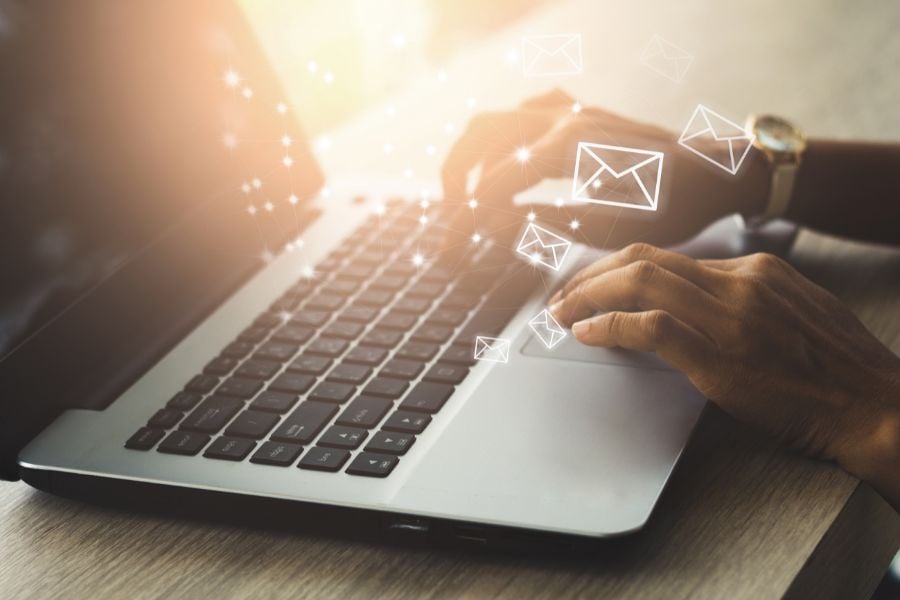15 Tips for Writing Better Emails
Writing a convincing email sounds easy right up until you read what you’ve written and you can’t even convince yourself. Does it need to be more persuasive? Maybe you’re not being more descriptive? Or maybe, you just need to use funny email sign offs that could make your emails more memorable.
Emails remain the standard way that people in professional spaces communicate. However, there’s a lot more to writing a good email than just sounding professional or using the right words.
15 Tips for Writing Better Emails
It’s not easy to write a good email, but you can get better at it. Here’s a quick look at a handful of tips and tricks that can have you writing better in no time.
Use a Professional Email Address
A good rule of thumb to follow when you’re sending emails is that you want to use a professional email address. Even when addressing a more casual audience, you want people to get the perception that you are a professional. Remember, first impressions matter. And the last thing you want is someone’s first impression of you by “[email protected].” It doesn’t just change people’s perceptions about you, but they can also form a bias against you and the firm that you represent.
Use a Smart Subject Line
The first thing that someone is bound to see about your email is your subject line. And if it’s not captivating or doesn’t pique their interest, then they’re not going to open it. It can be an exceptional marketing tool, it tells readers what the email is about and gets their attention immediately. When drafting your email, pay special attention to the subject line that you choose.
Greet People Professionally
Next, it’s important that you know how to greet your team or your audience properly. Even if you don’t want to keep an overly professional tone, you might want to tone down on the jokes or overly casual greetings. Hello team! Salutations! And others like it can work fine in most circumstances, but you should be more considerate of how you want to address your audience.
Use Humor Sparingly.
There’s a difference between a clown and a comedian. You don’t want to come off as silly or someone who shouldn’t be taken seriously. Being funny makes you more relatable, and can even make you more likely to get a response. But if you’re making too many jokes or treating the email like practice for a comedy set, then you’re more likely to lose your audience.
Use a Professional Email Signature
Now that you know what tone works best with your audience, you also want to include a professional looking email signature at the end. Along with giving all viewers a clear description of who you are and what is your role in the company, a professional email signature looks good too. Now, you might not think that looking good means a lot. But most people could use this to form an impression about you. So it’s best to stay safe in these instances.
Proofread Your Messages Before Sending Them
Possibly one of the most important ways that you can form a better first impression with your audience is by proofreading your messages before sending them. Few things are as embarrassing as grammatical errors in an email to your boss or your clients. While you might not think it’s that big a problem, you’re not the one that needs convincing. Besides, emails that haven’t been proofread show a general lack of care from the sender. And that could be a reason that a client declines your offer.
Consider Cultural Differences
People are rarely ever culturally insensitive on purpose, but that’s rarely a good enough reason to say something insensitive on purpose. You need to be more careful of the cultural differences that people may have, and send emails accordingly. This is where the earlier point of proofreading your work really hits home. You can usually pick off on anything that might sound insensitive, or just doesn’t sound as good.
Think Before Pressing the ‘Reply All’ button
Again, you want to take your time before you click on reply all. Even if it’ll take 10 minutes to check all the recipients, that’s time well spent. The last thing you want is to worry about a potential client seeing the wrong email, or your boss seeing how you talk to certain clients. Make sure you know where those emails are going. Remember, those extra 10 minutes can save you from a lot of awkward conversations around the water cooler, or confused clients.
Keep Fonts Simple
Make sure you’re using simple fonts that are easy to read and are the right size. Plenty of people try to express themselves using different types of fonts and of different sizes. 11 or 12-font size from the Sans Serif family is your safest bet, and it’s also the most comprehensive font style that you can get. You should also avoid making your text a different color and keep it a consistent black. Use bold, underline, and italics sparingly.
10.Create Email Groups
Segmenting your email list based on different target groups will help in marketing campaigns. You can send messages directly tailored to target group needs.
11.Consider the Tone of the Message
It is best to use polite language that makes the message easy to understand. Reading the message aloud could identify tonal errors.
Using Humor in Email Messages
While we need to be a bit careful in composing email messages, the use of humor can be employed beneficially to create a good impact. We can use funny signoffs in email messages like:
- Sincerely amused
- With high spirits and higher professionalism
- With earnest smiles
- In formal jest and sincerity
- Teleporting to my next adventure
Conclusion
We hope you have got a good idea of how to write better emails by reading this post. Now you can use the power of humor in your email messages to connect with people and groups in your personal and professional life.







